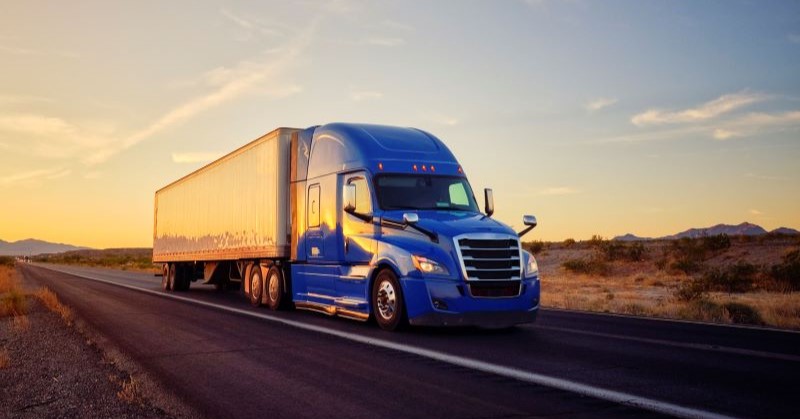
How to Strategically Distribute Trucking Safety Technology
By Alliant Transportation
Listen to the audio version:
In the trucking industry, safety is paramount. As trucking safety technology becomes more advanced, trucking companies have the opportunity to significantly enhance driver safety and operational efficiency.
A study conducted by the Insurance Institute for Highway Safety found that forward collision warning and automatic emergency braking (AEB), two effective trucking safety technologies, reduced rear-end crashes by 44 and 41 percent, respectively. This means that businesses can use technology to safeguard their drivers while making the roads safer for all.
However, these technologies should be deployed strategically among specific workers to maximize their benefits. Prioritizing newer drivers and those with past safety issues is a prudent approach that can yield substantial improvements in safety records and overall performance.
The Importance of Trucking Safety Technologies
Safety technologies in trucking, such as Advanced Driver Assistance Systems (ADAS), fatigue monitoring systems and onboard cameras, have transformed the industry. These innovations help prevent accidents, ensure compliance with regulations and promote safe driving behaviors. Allocating these technologies among new drivers and drivers with past safety issues will improve fleet performance.
Why Prioritizing New Drivers is Essential
New drivers are often more susceptible to accidents due to their lack of experience. Introducing them to the latest trucking safety technologies can help mitigate the risks associated with their inexperience. Specifically, providing safety technology for new drivers will result in the following benefits:
- Enhanced Training: Safety technologies, such as ADAS and onboard cameras, provide real-time feedback and assistance. This can be invaluable for new drivers, helping them learn and adapt to the demands of the job more quickly and safely.
- Confidence Building: Knowing they have access to advanced safety systems can boost new drivers’ confidence. Technologies like lane departure warnings and collision mitigation systems act as a safety net, allowing them to focus on learning without the constant fear of making a critical error.
- Early Habit Formation: Introducing new drivers to these technologies from the start helps build good driving habits. They learn to rely on these systems as aids rather than crutches, fostering a culture of safety from the beginning of their careers.
Distributing these safety tools among your new employees also helps to demonstrate your commitment to their well-being, which could lead to greater job satisfaction and higher retention rates.
Addressing Drivers with Past Safety Issues
Drivers with a history of safety issues pose a higher risk on the road. Equipping these drivers with advanced trucking safety technologies can help mitigate this risk and benefit the company and driver in the following key ways:
- Corrective Measures: Technologies like fatigue monitoring systems and inward-facing cameras can help identify and correct unsafe behaviors, which can make trucks more prone to exposures like accidents or theft. Continuous monitoring and feedback ensure that drivers are aware of their actions and can adjust accordingly.
- Accountability and Improvement: Onboard cameras provide clear records of driving behavior. This transparency encourages accountability, as drivers know their actions are being monitored. Regular reviews and feedback based on camera footage can lead to significant improvements in driving habits.
- Targeted Support: By focusing safety technology on at-risk drivers, companies can provide the necessary support and training to help these drivers improve. This targeted approach ensures that resources are used where they are most needed, leading to better overall safety outcomes.
By focusing your technology distribution on drivers with past safety issues, companies are more likely to reduce the likelihood of future accidents, yielding improved safety records that can lead to lower insurance premiums.
How to Implement Trucking Safety Technology
To implement this strategic distribution effectively, trucking companies should follow a structured approach:
- Assessment and Identification: Conduct thorough assessments to identify new drivers and those with past safety issues. This involves reviewing driving records, incident reports and feedback from supervisors.
- Customized Technology Packages: Develop customized safety technology packages tailored to the needs of these priority groups. For example, new drivers might benefit more from ADAS, while at-risk drivers might need additional cameras and monitoring systems.
- Training and Education: Ensure that drivers are well-trained in using these technologies. This includes initial training sessions and ongoing support to address any questions or issues that arise.
- Monitoring and Feedback: Implement a robust monitoring system to track the impact of these technologies on driver performance. Regular feedback sessions should be conducted to review performance and address any concerns.
- Continuous Improvement: Use the data collected from these technologies to continuously refine and improve safety protocols. This iterative approach ensures that the company remains proactive in addressing safety issues.
By strategically distributing safety technologies to newer drivers and those with past safety issues, trucking companies can enhance their overall safety profile. This approach not only helps mitigate risks associated with inexperience and past behaviors but also fosters a culture of safety and accountability. However, this means companies will have to shift away from the traditional distribution models, which were often based on seniority or longevity. While this shift may cause some short-term frustration among drivers, the benefits to the company can be significant, as even avoiding one accident can improve the company’s performance.
For more information, visit www.Alliant.com
Alliant note and disclaimer: This document is designed to provide general information and guidance. Please note that prior to implementation your legal counsel should review all details or policy information. Alliant Insurance Services does not provide legal advice or legal opinions. If a legal opinion is needed, please seek the services of your own legal advisor or ask Alliant Insurance Services for a referral. This document is provided on an “as is” basis without any warranty of any kind. Alliant Insurance Services disclaims any liability for any loss or damage from reliance on this document.



